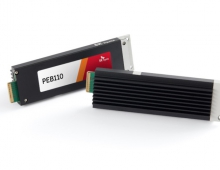
SK hynix Licenses Xperi's DBI Ultra 3D Interconnect Technology For Next-Generation Memory
Xperi Corp. has entered into a new patent and technology license agreement with SK hynix, offering the South Korean semiconductor manufacturer access to Xperi’s portfolio of semiconductor intellectual property (IP) and a technology transfer of Invensas DBI Ultra 3D interconnect technology focused on next-generation memory.
The terms and conditions of the agreement are confidential.
DBI Ultra is a patented die-to-wafer hybrid bonding 3D interconnect technology platform designed for homogeneous and heterogeneous 3D integration. By eliminating the need for copper pillars and underfill, DBI Ultra can enable a thinner stack than conventional approaches. DBI Ultra also allows the stacking of die that are the same or different sizes, processed on fine or coarse wafer process technology nodes, or manufactured on the same or different wafer sizes while readily scaling down to 1 µm interconnect pitch providing 2.5D and 3D integration flexibility. Among a wide range of applications, DBI Ultra makes it possible to manufacture 8-, 12- and even 16-high chip stacks while meeting the packaging height and performance requirements for high-performance computing.
DBI wafer-to-wafer hybrid bonding, the predecessor to DBI Ultra, supports from 100,000 to 1,000,000 interconnects per mm2, using interconnect pitches as small as 1 µm. According to the company, the much greater number of interconnects can offer dramatically increased bandwidth compared to conventional copper pillar interconnect technology, which only goes as high as 625 interconnects per mm2. The small interconnects also offer a shorter z-height, making it possible to build a stacked chip with 16 layers in the same space as conventional 8-Hi chips, allowing for greater memory densities.
DBI Ultra uses a chemical bond that allows for interconnect layers that add no stand-off height, and require no copper pillars or underfill. While the process flow used for DBI Ultra is different when compared to conventional stacking processes, it continues to involve known good dies and does not require high temperatures, which results in relatively high yields.
DBI Ultra is already incorporated into image sensors and RF components shipping in hundreds of millions of smartphones around the world. DBI Ultra is poised to realize similar success in 3D stacked memory as well as in 2.5D and 3D applications requiring the integration of memory with CPUs, GPUs, FPGAs, or SoCs.





















